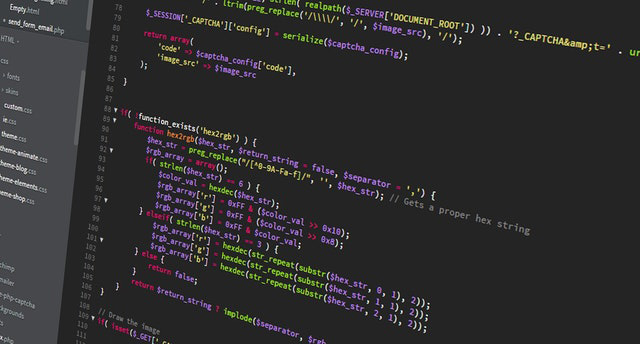When developing an application, web or software tool, we inevitably think about programming. But is that what low code is? Is it just another programming language? Does it have advantages over the rest? How does it work? The next big revolution is already here and it is changing the way businesses around the world approach their processes.
What low code is
In practice, low code means less programming. This is the real revolutionary point: a platform that allows the development of applications or software with only a basic knowledge of programming (general knowledge, moreover).
Instead of lines and lines of code occupying the entire screen, low code contains an array of visual elements. These function as modules that can be concatenated to create a logical sequence that solves the problem at hand.
That does not mean that the programming will disappear completely (although it is possible). Normally, low code saves between 70 and 80% of the usual code in the development of an average application. This means that we will still have to program around 25% of our code. Even so, the advantage is obvious.
For those professionals used to programming this translates into greater speed. For those users who are not, there are solutions called no code that do just that, do not use any code at all. In this case, however, the versatility is somewhat less, since the system is based solely on predefined modules with no possibility of customization.

Simplicity in programming is what low code is all about. Photo: Pixabay.
True power
During the 1990s, architectures appeared that allowed for less dense and more visually based programming. However, it was not until the first years of the new millennium that we were able to enjoy the true power of low code.
To begin with, as we have already mentioned, low code uses a graphical interface to allow the construction of applications. This greatly facilitates the way we work. We now move to a modular approach where we can drag and drop already developed packages that, in a logical order that we design, are able to function as apps.
As we have already seen, these packages allow a certain degree of customization (programming), so the power of the tool increases exponentially with the degree of complexity we add to that code.
This way of working allows the construction of applications in a simpler, but above all faster way. The time savings can be up to 70% compared to traditional programming. And we already know that time is money.
All advantages
If the ease of programming solutions from scratch for any company is not enough, the advantages of low code go even further.
The reuse of modules is one of its great virtues. Whether they are those that come by default, or others created specifically for an app, the modules of low code platforms can be reused infinitely. There is a huge collection of plugins, widgets and templates available to developers. There are even stores that offer their modules (free and paid) and repositories in companies so that employees can access the resources that have already been created.
Cloud access is another great advantage of low code. Thanks to this functionality, updating a database or even making changes does not involve reprogramming or reinstalling anything. Maintenance tasks are also simpler and interfere less with the day-to-day running of the company. Fewer interruptions, less time wasted, more savings.
Endless possibilities
As we have seen, the overwhelming amount of facilities offered by low code to develop applications offers an enormous range of possibilities. Whether web, mobile or desktop applications; finance, human resources or management; for public administration or private entities… Low code is the solution of the future that is already working today.
Its speed, simplicity, cost reduction, flexibility and ease of use make it one of the most powerful tools available today. The alternative to conventional programming that is here to stay.
